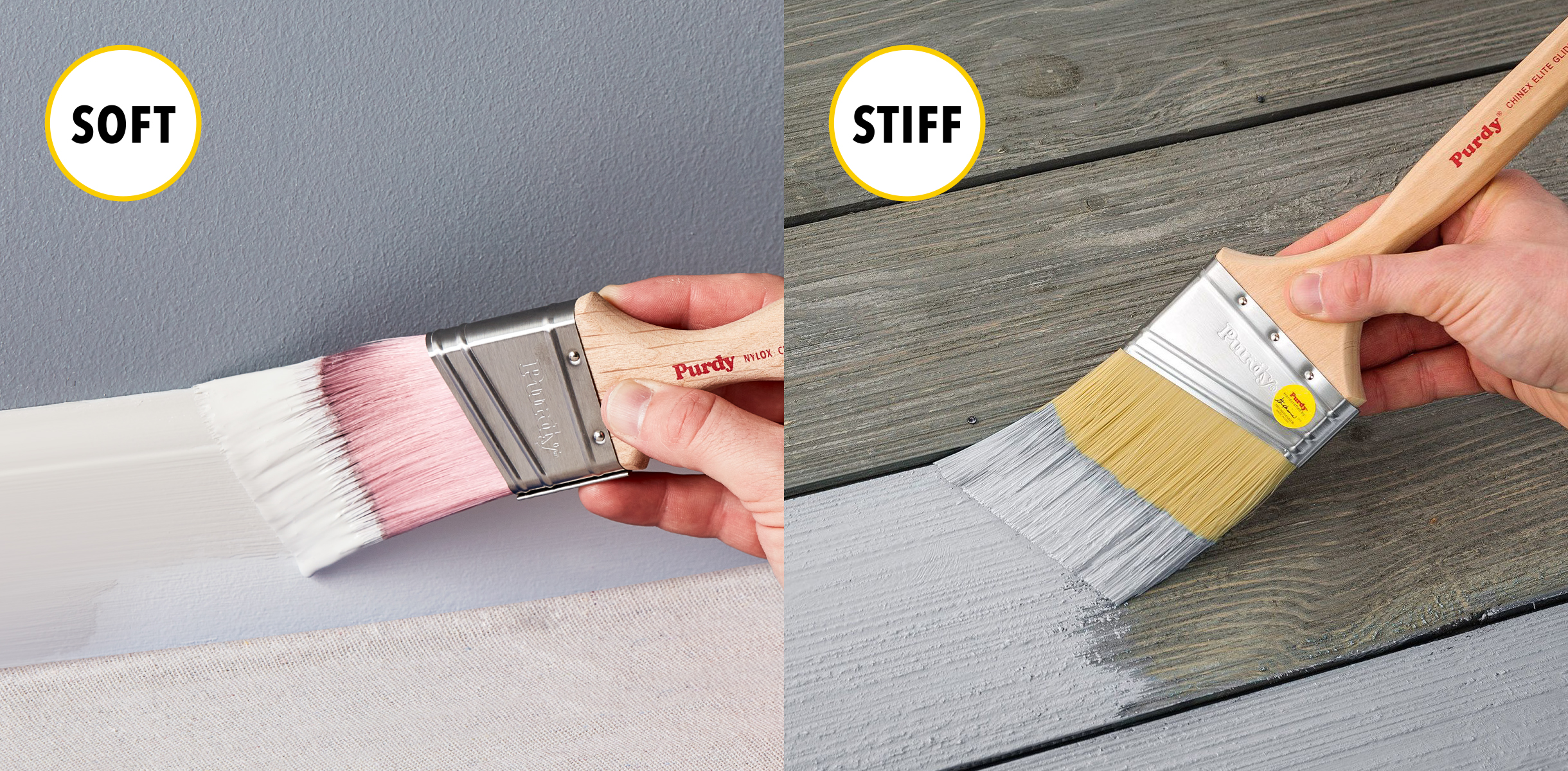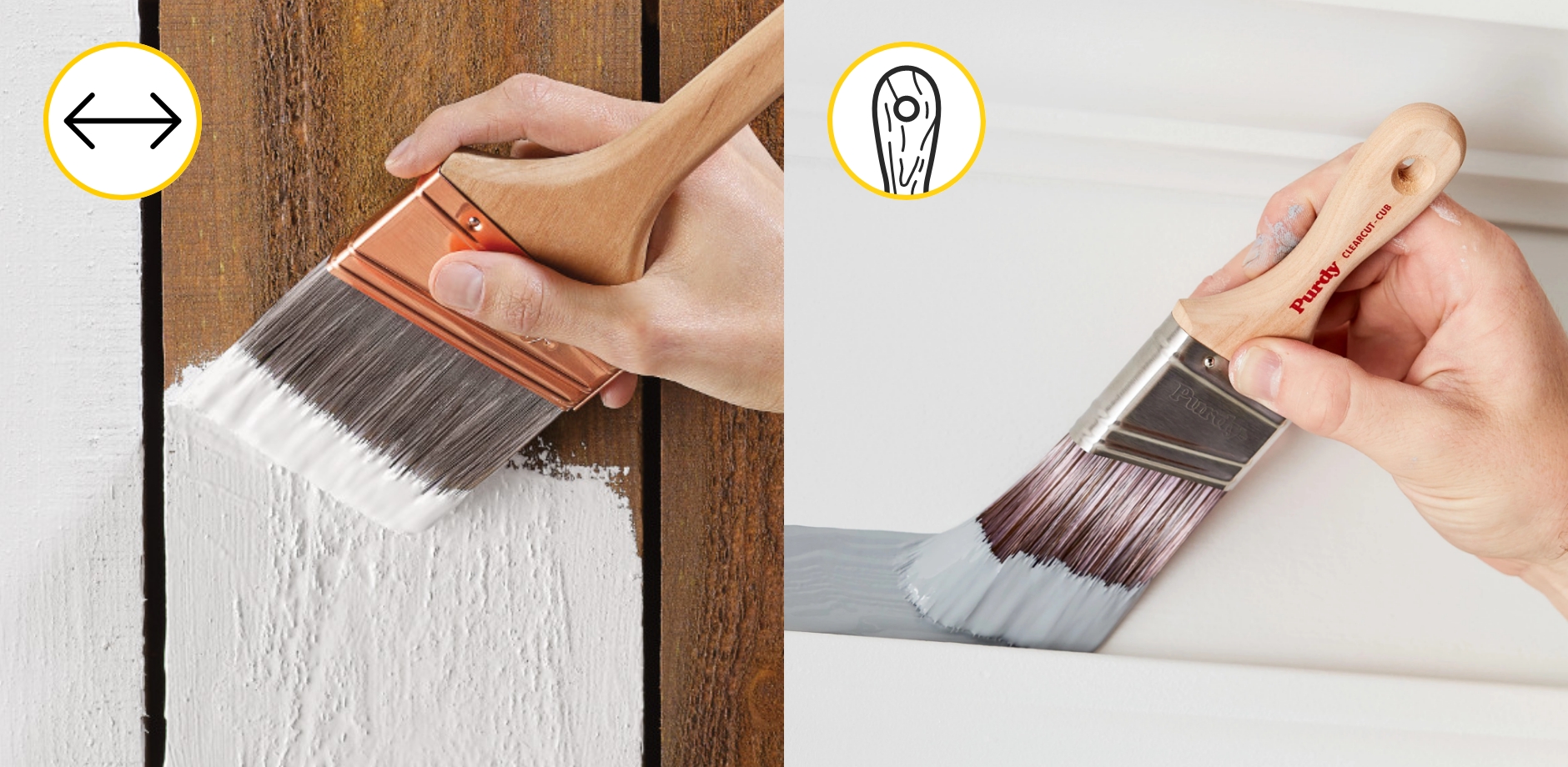© 2025 Purdy® Company.
How to Choose the Right Paintbrush

How to Choose the Right Paintbrush
How to Select the Best Tool for Any Project
Starting your next project with the right applicator is paramount to a quality finished product.
Why?
Paintbrushes come in all shapes and sizes and quality roller covers are made with different materials for various applications. The paint applicator you use should be carefully chosen based on the texture of the surface you are painting, type of paint, whether you are painting indoors or outdoors and even how large the area is you are painting. Choosing the proper paintbrush or roller cover that is best suited for your project will mean a quality outcome with even application every time.
Soft Versus Stiff
Put simply, stiff filaments provide crisp lines when cutting in or painting around windows, doors and trim. They also hold thicker coatings well. Soft filaments, on the other hand, leave fewer brush marks and ultra-smooth finishes when tackling doors, furniture or trim work.

Synthetic Filaments Versus Natural Bristles
Synthetic brushes are designed for all types of coatings, offering maximum versatility. Natural bristle brushes are designed for solvent- and oil-based coatings.

Size and Style
Angular-style brushes are also great for getting into tight corners and other hard-to-reach areas, or when painting crisp lines along trim, ceilings and baseboards.
Flat-style brushes should be used on projects that require long strokes on large continuous surfaces.

Large-size brushes cover greater surface area more efficiently when a roller cover isn’t ideal, like on fences or curved surfaces.
Short-handled brushes are ideal for painting in cramped spaces like corners, cabinets and trim. Purdy® Cub brushes, for example, feature short, lightweight alderwood handles that provide better control when doing precision work in tight spaces.

Surface and Texture
Paintbrushes for smooth surfaces are soft, versatile brushes, like those in the XL® lineup. Great for use both indoors and out, these brushes include medium-stiff filaments designed for latex and oil-based paints, primers and stains, are easy to clean and withstand years of use.
Or reach for one of the Purdy Clearcut® Elite™ brushes which deliver excellent paint release and superb cleanability, ideal for use with heavy-bodied and Low VOC paints, but are compatible with a variety of surface types and textures.
Rough, textured surfaces such as stucco or brickwork require a stiffer, more durable brush, such as a Purdy Pro-Extra® or Chinex® Elite™.

Handle Style
The right handle design can help you stay comfortable and productive for the entirety of your project.
Rattail handles are long, skinny and held like a pencil.
Fluted handles are square with cut-off corners to rest easier in your hand.
Beavertail handles are thick and round to fit nicely in the palm of your hand.
Short handles are for painting in tight spots where a longer handle would get in the way.

